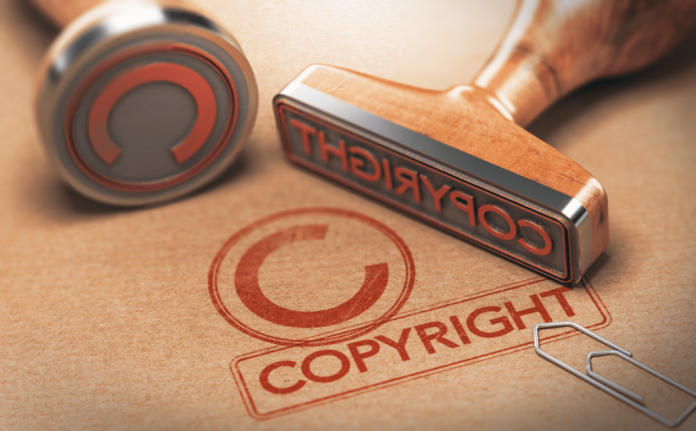This article is written by Arijit Mishra, from KIIT School of Law, Odisha. This article talks about the top cases under copyright in 2019.
Table of Contents
Introduction
The word copyright means “right to work” where the creator or the authorised person has the right to produce the work. It is a legal right possessed by the owner under Intellectual Property. Where with the help of mental or intellectual ability, a person creates a unique product, that is considered as original. Those unique products include music, lyrics, literature, graphic designs, films etc.. Copyright acts as a safeguard to protect an original work from duplicated. Once a creator registers his product under copyright, he can file a suit against anyone who copies his work. This concept helps the artists and creators to work without fear and create original products where there is no subject of plagiarism by other people. The copyright holder has the complete right and control over adaption or reproduction of the work. After the death of the innovator, the copyrights last for upto 60 years.
Top cases on Copyright in 2019
Sanjeev Pillai Vs. Vennu Kurnapalli and Anr
Facts
‘Mamankan’ is a festival which is held once every 12 years on the bank of the Bharathpuzha river in Kerala. The appellant Sanjeev Pillai who was a scriptwriter as well as a director said that he has researched the history of Mamankan and has written a script for the film. For this project, he met Venu Kunnapalli who was the first respondent, who was supposed to work as a producer to make a film based on that script. After that, he signed an MoU with Kavya film Company which was linked with Kunnapalli. In this film, Pillai was appointed as the director, but after the completion of the two shoots, his service was terminated and replaced with someone else. The shooting of the film was completed by some modification on his script. Pillai filed a suit seeking for relief and also filed an interim injunction application to restrain the respondent from releasing, publishing or exploiting the film Manankan, and also restrain him from pre-release publicity till it is not given proper adequate authorship credits to Pillai as per film industry standards.
Issues
Whether the author of the work will have special rights for claiming authorship of his work under Section 57(1) of the Copyright Act?
Judgement
The court analysed that Section 57(1) of the Copyrights Act prescribes that even after the argument of the copyright in a work, the author has special rights to claim authorship of the work. The court also noted that Pillai has a prima facie case against the respondent and his legal rights would not exhaust to claim authorship over it.
Therefore the Court took a balanced view:
- All arrangements for the release are made by the producer, postponement of the same may cause huge damage to Kunnapalli.
- In the film industry, the work of so many people is involved in making a film, if it gets postponed it would definitely cause difficulties to all those people.
- However, the rights of Pillai cannot be refused.
Based on these above points, the Court held that the film will be released without showing anyone’s name as the scriptwriter or the writer of the screenplay until the disposal of the suit is made. The court also stated that the issue of whether the respondent modified or mutilated the script was a big question which will be decided after the trial.

Tips Industries Vs. Wynk Music
Facts
Tips Industries Ltd (plaintiff) is an Indian music label that operates copyright over a significant music repository which in 2016, was granted a license to access the repository by Wynk. During the expiry of the said licence, they decided to re-enter the licensing conditions but failed to do so. After this Wynk took the safe side by citing Section 31D of the Copyright Act. Tips challenged Wynk citing Section 31D, and prosecuted Wynk in accordance with Section 14(1)(e) for breach of their exclusive rights of sound recording.
Issues
Whether statutory licensing scheme exists under the Copyright Act to online streaming services?
Judgement
After hearing both parties, Bombay High Court held Wynk guilty of direct infringement under two grounds:
- To offer the copyrighted work under Section 14(1)(e)(ii) which allows the user to listen and download to the plaintiff’s work offline.
- Under Section 14(1)(e)(iii) for conveying the plaintiff’s work to the users through their streaming service.
In addition to this, Bombay High Court cleared out the ambiguity that existed regarding the online streaming services falling under the scope of Section 31D.
- Under Section 31D of Copyright Act ‘download/Purchase’ of such copyrighted work is not covered.
Wynk Music approved the users to store or download copyrighted music for future use which was established to be a “sale” and not “communication made to the public” which constitute as a broadcast under Section 31D. Hence, no claim for statutory license exists for using such copyrighted work by Wynk Music.
- The application of Section 31D does not include Internet Broadcasting.
The Court found Section 31D as an exception which can be strictly interpreted. After the examination of the statutory scheme of 31D, it becomes apparent that statutory licensing is only intended to radio and television broadcasting and not internet broadcasting. The memorandum presented by the defendant does not have any additional weightage of their claim, it only functions as “guidelines’ ‘ and lacks statutory authority and has no influence to the scope of their claim.
The judgement was passed in favour of plaintiff and an interim injunction was given to the plaintiff, having regard that they made it a prima facie case and would suffer irreparable damage in the way of lost revenue.
Raj Rewal Vs. UOI and Ors
Facts
The Hall of Nations Building was designed by Mr.Raj Rewal and Mr. Mahendra Raj . The said building was treated as an icon of modernist Indian architecture which was built in the Pragati Maidan in New Delhi. In 2016, the IPTO proposed to demolish the Hall of Nations Building for building an “Integrated Exhibition cum Convention Centre”. After several attempts by the plaintiff to protect such buildings from demolition, he cannot stop it from demolition. After the demolition of the building plaintiff filed a suit against the actions of IPTO for claiming that the actions of demolition by ITPO had infringed the plaintiff’s special right under Section 57 of this Act.
Issues
Whether the architect or the “author” of a structure has a right placed in him to prevent such demolition or modification of their work by the owner of the building?
Judgement
The Court rejected the claim made by the plaintiff and stated that there is an issue of conflict of two different rights i.e Section 57 the architects rights and the landowners rights to practice acts concerning their property. The Court noticed that the plaintiff is not allowed to prevent the demolition of the building because it put restrictions on defendant’s right to practice their control over their property. Property which is provided to them under Article 300A is a constitutional right which is acquired over the statutory right of plaintiff, which they request to exist under Section 57 of Copyright Act, 1957.
The court stated that the rights of the author under Section 57 to forbid ‘ distortion, mutilation or modification of his work, which does not approve an author to prevent complete destruction of their work ‘that cant be viewed, heard, seen or felt’ and cannot affect the reputation of the author. The Court reasoned that the ‘construction’ for future events under Section 52(1)(x) could only happen if the building has already been demolished and therefore stated that Section 57 could not reasonably view the right to object to the demolition of the building. At last, the Court dismissed the suit because due to the lack of cause of action against the demolition of the Hall of Nations.
Yash Raj Films Vs. Sri Sai Ganesh Productions
Facts
The suit of copyright infringement was filed against Sri Sai Ganesh Productions by Yash Raj Films Pvt. Limited on the grounds that Ganesh has copied the movie Band Baaja Baaraat which is produced under Yash Raj Films. Jabardasth is a film by Sri Sai Ganesh Productions which had substantial and material similarities in terms of theme, plot, character, sketches and expressions amongst other things.
Issues
Whether copyright exists in a cinematography film and the underlying works that are made up of?
Whether expressions under Section14 (made a copy of the film) means to prepare a physical copy of the film only?
Is there any substantial and material similarity between the two films?
Judgement
When the Court was determining with the first issue, the court took a reference of a case MRF Limited Vs. Metro Tyres Ltd., in which Court stated that copyright exists in a “cinematograph film” and the works that come together to constitute it and there must be an original work to exist in “cinematographic film” which will be read in Section13(1)(b) of the Copyright Act,1957 through Section13(3)(a) and 2(d) of the Act. While determining with the second issue, the court held that “to make a copy of the film” stated under Section14(d)(i) of the Act does not mean creating a hard copy of the film by process of duplication. As the films are protected like original works, the Court increased the “test of originality” which is set out in the case of R.G Anand Vs. Deluxe Films for distinguishing two films on the basis of “substance, foundation and Kernel’’. So, the Court found that the defendants had replicated the fundamental, essential and features of the plaintiff’s film.
UTV Software Communication Limited Vs. 1337X.TO and Ors
Facts
In this case, the plaintiff including UTV Software Communication Limited, are companies connected in creating content and distributing cinematographic films around the world including India. The defendants among others, thirty identified websites including John Doe defendants, the Ministry of Electronics and Information Technology, the Department of Telecom and various ISPs.
The plaintiff argues that the defendant provides access to their copyrighted works, in such a manner that it violates their rights under the Indian Copyright Act. The plaintiff provided evidence to access a sample of such infringing content that the websites were engaged in online piracy. The defendant did not respond to the summons since when they hosted it outside India. However, the issue is reflected on the question of law “the general public importance, the Court appointed an impartial adviser, Mr. Hemant Singh to assist the Court on the question of law with its determination.
Issues
Whether a copyright infringer on the Internet is treated differently from an infringer in the physical world?
How should the Court deal with the “Rogue Websites” which are blocked and again get resurfaced by changing it to some alphanumeric websites?
Judgement
The Court held that “dynamic injunction” stemmed from specific provisions under Singapore Law. However, the court held that it was within its inherent powers under Section 151 CPC to make a solution of similar nature and that the plaintiff could avail the same injunction by implementing additional websites under Order 1 Rule 10 of the CPC. This process would be helpful in reducing piracy by “Rogue Websites” and also in reducing the burden on the copyright owners to go through such a difficult route of litigation over and again.
Finally, the Court directs MeitY and the DoT who are the defendants in this case, to consider a suggestion where they can come with a policy for a scheme, where individuals who access “pirated content” if they don’t refrain from continuing such actions then they will be fined for it.
References
- https://www.intepat.com/blog/copyright/5-copyright-cases-2019-india/
- https://spicyip.com/2019/09/tips-industries-v-wynk-music-a-case-of-statutory-mis-interpretation.html
- https://spicyip.com/2019/12/kerala-hc-directs-film-release-without-script-writers-name-in-mamankam-moral-rights-dispute.html
- https://spicyip.com/2019/04/breaking-delhi-high-court-issues-indias-first-dynamic-website-blocking-injunction-for-copyright-infringement.html
https://t.me/joinchat/J_0YrBa4IBSHdpuTfQO_sA
Follow us on Instagram and subscribe to our YouTube channel for more amazing legal content.












